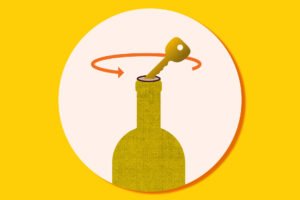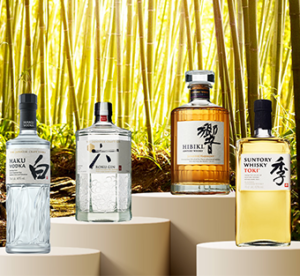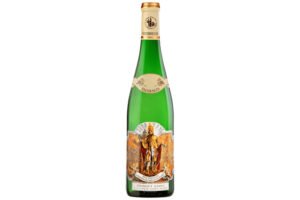Despite Challenges, Brewers in Alaska Create a Greener Future

[ad_1]
Although Alaska has the eighth-most breweries per capita nationwide, beer here is a precarious business. Brewers must cough up major capital to overcome manufacturing and shipping hurdles.
On the other hand, Alaska brewers get to boast the cleanest pours in the country with abundant access to glacial water. What some might view as setbacks have only fueled brewers in the “last frontier” to blaze sustainability trails for craft beer.
“You Got to Be Prepared”

Brewing in Alaska presents a set of challenges that breweries in the lower 48 will most likely not encounter.
“We’re at the end of the supply chain up here,” says Joe Gilman, brewing manager of the Kenai River Brewing Company. “So, with the shortage of stainless and aluminum we end up sourcing all our cans from the Philippines. They’re European size, which means changing all of the labels. And we can’t just get stuff overnighted. If I can get something here in four days I’m proud of myself—‘Yay, I did it,’” he says with a laugh.
Barges handle most of the shipping to and from Alaska, and the brewing industry is no exception. So, it’s an undertaking to bring goods from the country’s East Coast.
“It took us a year to get the chemical used for counting yeast [from the East Coast],” says Drew Weber, head brewer at Glacier Brewhouse in Anchorage. “You can’t put it on air. You can’t cross Canada. Whole shipments would drop just because the people we were ordering from didn’t believe they could actually ship it to Alaska. Great planning is the biggest thing. You got to be prepared.”
Distance from the rest of the country isn’t the only distribution factor. Alaska is larger than Texas and California combined and relies on ships and bush pilots.

“I remember one of my first [brewing] conferences, and they were talking about how you need to concentrate on all the retailers within 100 miles. We just laughed at that one,” says Marcy Larson, a cofounder of the state’s longest continually running brewery, Alaskan Brewing Company in Juneau.
Other challenges include constant freezing temperatures in some regions taking a toll on forklifts’ hydraulics in the winter and having no readily available cattle farms to dump spent grain.
Changes in tourism due to Covid-19 hit hard.

“The easiest way to put it is, 50% of the sales here at Glacier Brewhouse are done in three months,” says Weber, referring to booming summer tourism in Anchorage.
For breweries along the state’s Inside Passage, the narrow coastline and islands of Alaska that hug Canada north of Seattle, cruise traffic is crucial.
Michael Healy, general manager at Skagway Brewing Company in Skagway, says cruise traffic accounts for 95% of business, and the impacts of the pandemic have been significant.
“We expanded into a new building in 2019 after turning people away day after day,” says Healy. “We were making 700 barrels a year; 2020 was less than 100 [barrels] [and 2021] was about 100 [barrels]. We’ve got to wait and see.”
Creative Solutions

To counter these difficult conditions, brewers in Alaska look for creative, sustainable solutions.
Alaskan Brewing was the first craft brewery in the U.S. to install and use a system to capture and reuse CO₂. It was also the first to reduce water usage with a mash filter press, a Belgian-based technology that separates the liquid that will become beer more efficiently than traditional filtration processes. These innovations, along with its patented process of using spent grain to fuel the steam boiler, adds up to a recycling system the company calls “Beer Powered Beer.”
“It’s not cost effective for most craft brewers in the lower 48. But because our costs are higher for shipping everything, we can pay off reclamation machines faster,” says Larson.
Skagway Brewing converts its restaurants’ fryer oil into biodiesel that fuels its boiler and heats its building. Its CO₂ emissions are diverted into an indoor aeroponic farm to grow greens for its restaurant and brewery.
“Our produce was terrible—we were throwing away 10–30% of all of our greens and herbs because they spoil by the time they got to us,” says Healy. “So, we said, ‘All right, let’s just grow our own. We have CO₂ from the brewery; plants like CO₂. Let’s do this.”
Brewers’ commitment to reusing resources isn’t just logistical. “We love where we live, and we want to preserve it and not mess it up,” says Larson. “So, for us, a manufacturing company, we try really hard to do what we can to keep its quality.”
A Community Affair

Brewers attribute their success and innovation to Alaskan culture.
“Because of where we are, it brings to us a group of can-do, innovative people,” says Larson. “You don’t have people who are just doing one specific thing and that’s all they do. You can’t get by on just specialists in Alaska.”
Healy agrees that everyone must be a jack-of-all-trades. “And what is great about here is, if you don’t have those skills, you can get them. There is a lot of opportunity here.”
Community is everything in a state where traveling to the nearest town can be a daylong endeavor.
“It’s a small town; we have those connections,” says Gilman of Soldotna, Alaska. “I can go down to the refrigeration guy in town with a problem and he’ll stop by in the afternoon.”

“Alaskans have a lot of pride,” says Healy. “You can probably find fairly similar beer even cheaper at the liquor store, but locals prefer the fresh beer made in their own town.”
Gilman said when a pump at his brewery went down, he could count on others to have a crucial part flown to him so they didn’t have to close for days. “We’re so spread out up here, we don’t get to see each other except for a few times a year at beer festivals. But we’re all very tight and it takes the pressure off.”
Weber agrees.
“Whether it’s breaking down on the side of the road or needing some more malt, we give each other as much help as we can,” says Weber. “And we all make great beer. I guarantee you’re going to find a few you’re going to love at every brewing company.”
[ad_2]






